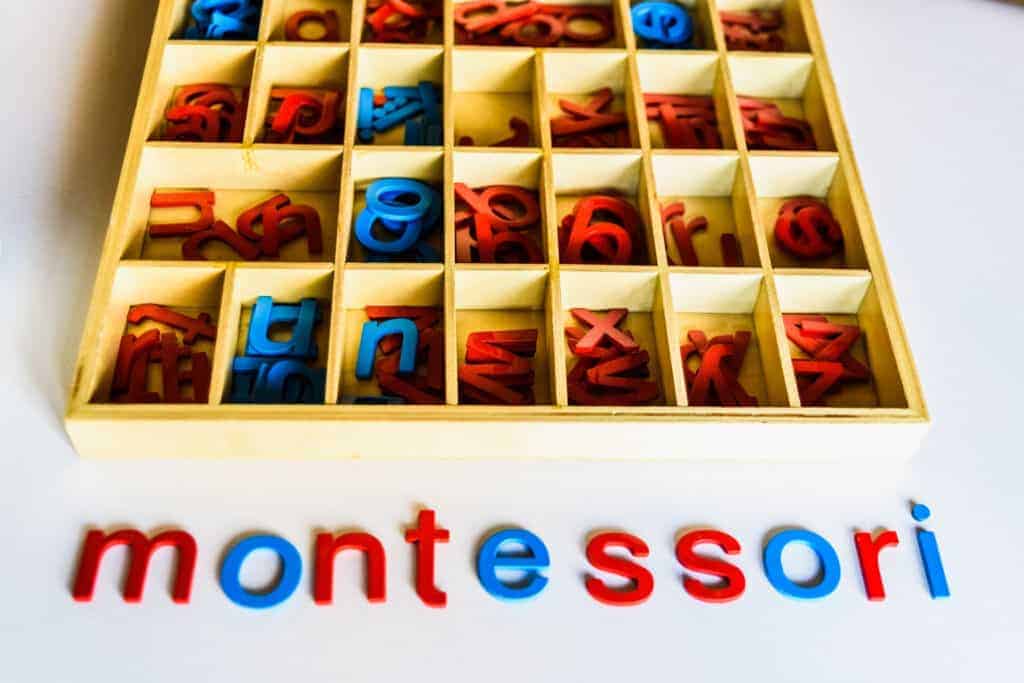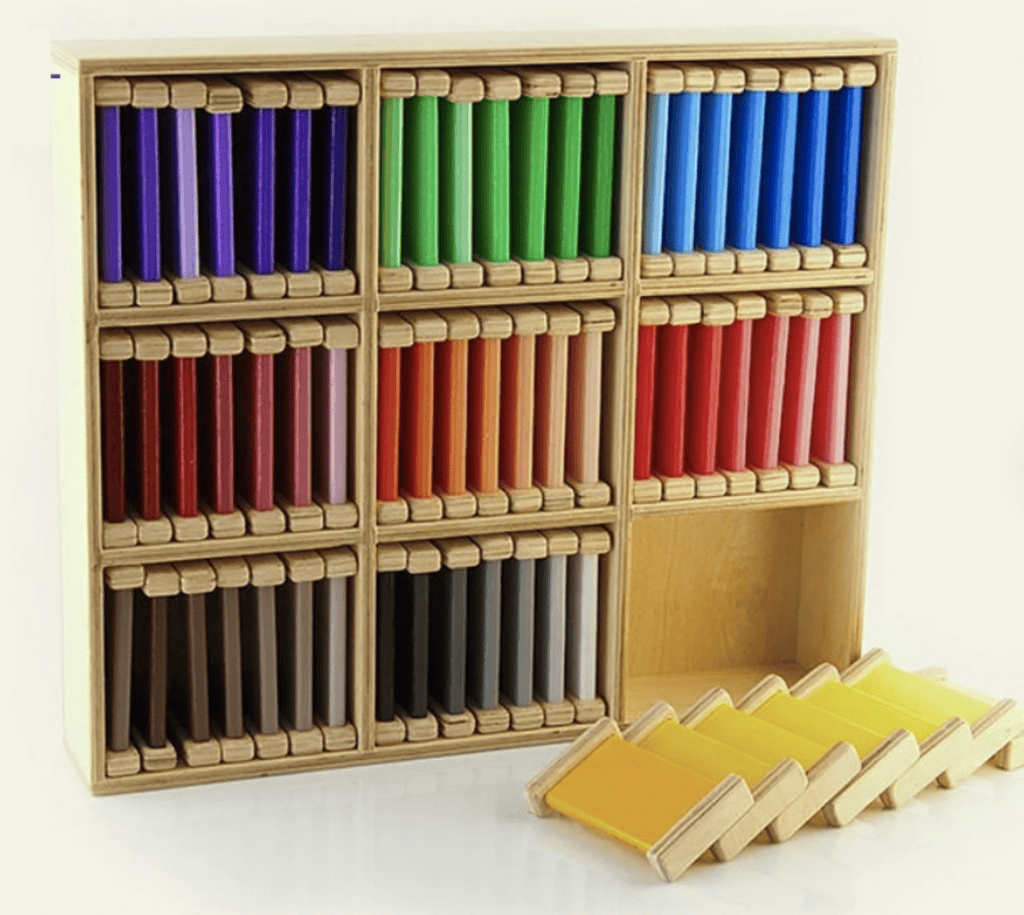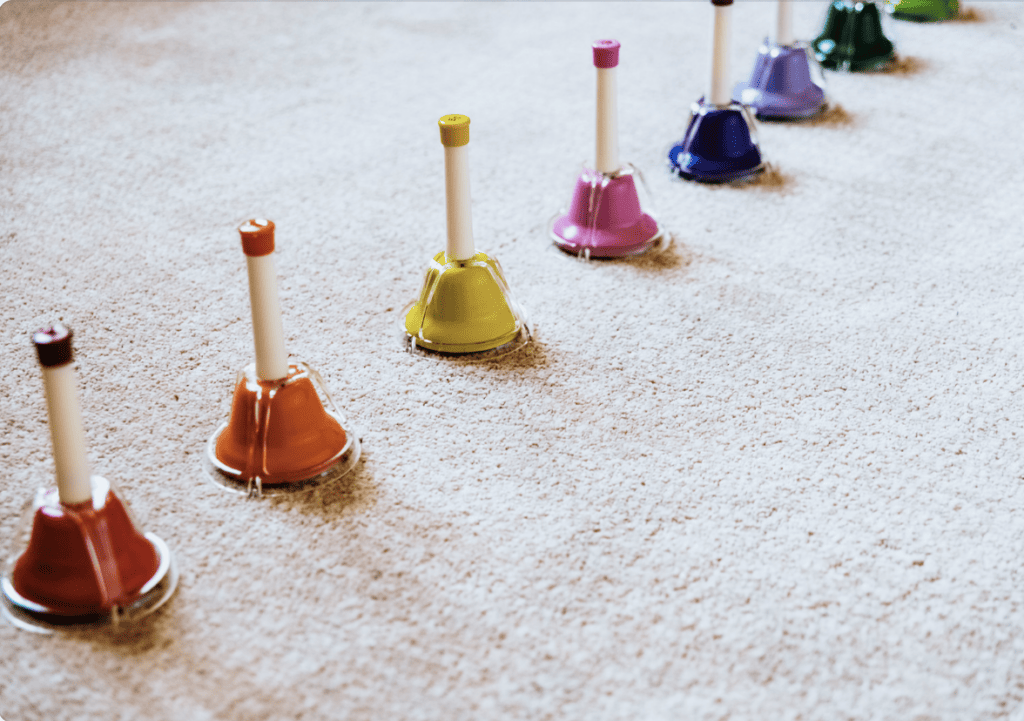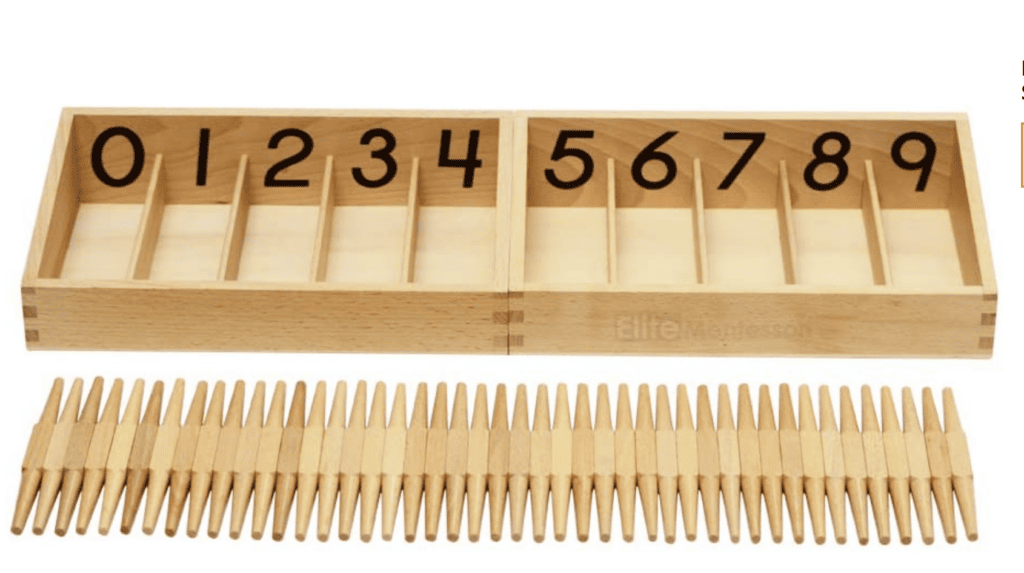All children learn and grow at their own pace while in early education. Because some children progress faster than their peers, the
The
There are many ways to use a movable alphabet to help children learn more about and progress in their language skills. The

What is the Montessori Movable Alphabet?
The Montessori Movable Alphabet is a useful tool that is typically used in a
The
This learning tool is founded on the idea that children can learn to read and spell earlier than most schools begin teaching them to. In other words, kids can read and spell words before they even have the fine motor skills to use a pencil, pen, or another writing utensil to write them.
Use of the
This learning tool also allows children to increase their knowledge of the alphabet. It also increases their written language skills as well. In addition to its basic uses, the
Children in a
In some cases, the movable alphabet is a child’s first experience with written language. Before this point, children primarily communicate with their voices. Even before children are ready to start spelling with the movable alphabet, they can hold the letters and memorize their shapes.
Another purpose of the movable alphabet is for children to start symbolizing their thoughts in a physical form. This prepares them to start constructing words, sentences, and phrases with a writing utensil. Before children get to this point, they start with individual letters and eventually move onto constructing single words.
How to Use The Montessori Alphabet

When teaching children the movable alphabet, teachers use different exercises at different stages in the child’s learning and development.
The first exercise children complete with the
Introducing Children to the Movable Alphabet
Invite the child to use the alphabet by setting the open box in front of them, the lid stored underneath the box. Ask the child to find the letters that correspond with different sounds.
Using other
After the exercise is complete, have the child put the letters back in the box. Have them put the letters back in alphabetical order, working left to right.
Three Letter Words
Once a child has learned to identify letters they can begin to form three-letter words. Like all
Set the open box with the lid underneath it in front of the child. Start by suggesting a simple, three-letter word for them to spell. Show the child a picture of the word as well as its correct spelling. Although this will eventually be phased out, it allows them to connect words with objects and ideas.
The child should be asked what sounds they hear when the word is said. For example, ask them what sounds they hear when you say the word “dog.” As you repeat the word for them, emphasize the first sound. They will then choose the letter they think best represents that sound from the box. Repeat this process for each letter in the word.
Although it is appropriate to assist children struggling with this exercise, be careful not to do the work for them. Rather, assist them by emphasizing the sound of letters they are struggling with.
After you complete a three-letter word, you should move on to another one. For each word, you should not read the words because this is just a word-building exercise. After the child completes their exercise, the letters should be returned to the box as described in the previous exercise. This can increase the child’s organizational and sorting skills as well!
Short Phrases & Short Stories
Once a child has established a vocabulary of words to spell, they can move on to this exercise. Rather than forming individual words, they will be constructing short phrases. Use picture cards to help teach children this exercise as well.
After the child can form several phrases, they can begin learning about how to structure sentences. A skill that will prepare them for the next exercise, forming stories. Ask the child to create a story with their words. If a child needs assistance, you can use picture cards again.
Once the child has completed the exercise, have them sort the letters back into the box alphabetically.
Signs a Child is Ready to Use the Movable Alphabet
You will need to be observant to notice when the child is ready to use the movable alphabet. Children are typically about 3.5 years old or older when they are ready to begin to use and learn using a movable alphabet. At the very least, they should be able to recognize 3-4 consonant sounds and one vowel sound to begin using this learning tool.
Prerequisites for using the movable alphabet include being able to analyze words and recognize the sounds that different letters make. This is because they will need to be able to reorganize the words using graphic symbols (the wooden letters) for the sounds in the word.
Even without those prerequisites being met, a child may still be ready to start working with a movable alphabet if their interest level is high and they are familiar with at least half of the 26 letters and at least 2-3 vowels. With this level, you’ll need to be sure to help the child use words that can be spelled with their limited knowledge of letters.
Children will be ready to use the movable alphabet once they begin recognizing the sounds of letters. This can be manifested by the mimicking or repeating of sounds. This shows that they can associate sounds with specific letters and may be ready to form words.
Of course, the decision is ultimately up to the parents and teachers of the child to determine when they are ready. As mentioned previously, each of us learns and grows at our own pace. A child should never be held back if they are ready to learn with a movable alphabet before the “proper” or “typical” age.
Here are a few other tips that may help in deciding if your child is ready for a movable alphabet or not:
- They know the letters of the alphabet.
- They know the phonetic sounds of each letter (and even some phonemes).
- They have the ability to sound out and even read short phonetic words. (Just because they don’t do it all the time, doesn’t mean they aren’t able to. A child could be fully capable of doing this, but only do it when they feel like it. If this is the case, they still have this ability.)
- They show an interest in the material, or movable alphabet when they are presented with it. (This may be one of the best indicators that a child is ready. If they are ready for this new material, they are more likely to show interest in it and want to use this tool. On the other hand, if it is too advanced or too simple, the child won’t show as much interest in the materials.)
How to Have a Supportive Learning Environment

Children love to learn, especially when they are in a supportive learning environment. The difference from typical learning environments is that the teacher is not in charge of the learning experience. The child leads the learning, and as the name denotes, the teacher supports.
Although traditional schooling sets the pace at which children should learn, the
Always allow the child to dictate their own pace of learning. If a child is forced to go faster or slower than they need to learn, it may harm their progress and they may even lose interest in learning. Having the teaching and learning process be “child-led” can be a bit scary and unfamiliar at first, but it is both necessary and beneficial to their overall learning.
Allowing children to be autonomous in their learning is critical. If they are allowed to be independent in leading the process and learning at their own pace, they are more likely to maintain interest in the task. This can actually help them learn faster. Teaching children in this way may also help them become lifelong learners.
Do not pressure your child to use the
Instead of pressuring them to learn, provide them with plenty of opportunities to do so. These do not all need to be guided learning opportunities. When children are in an environment where they are encouraged to follow their own interests, they learn a significant amount on their own.
Parents and teachers can assist children in learning by answering their questions; however, the exploring ad experimentation should be done by the children themselves. This teaches children an important skill that they will use throughout their life. A supportive learning environment teaches children to figure things out on their own.
Current education curriculums focus on controlling how, what, and when children learn. This dictated learning environment does not emphasize personal exploration or individual growth. It creates an educational environment that is “one size fits all.”
The
As you introduce the Montessori movable alphabet to your children, remember these principles. Always start by inviting them to participate and only continue if they consent to do so. This will lead to a learning experience that is more beneficial to them and less stressful for you.







